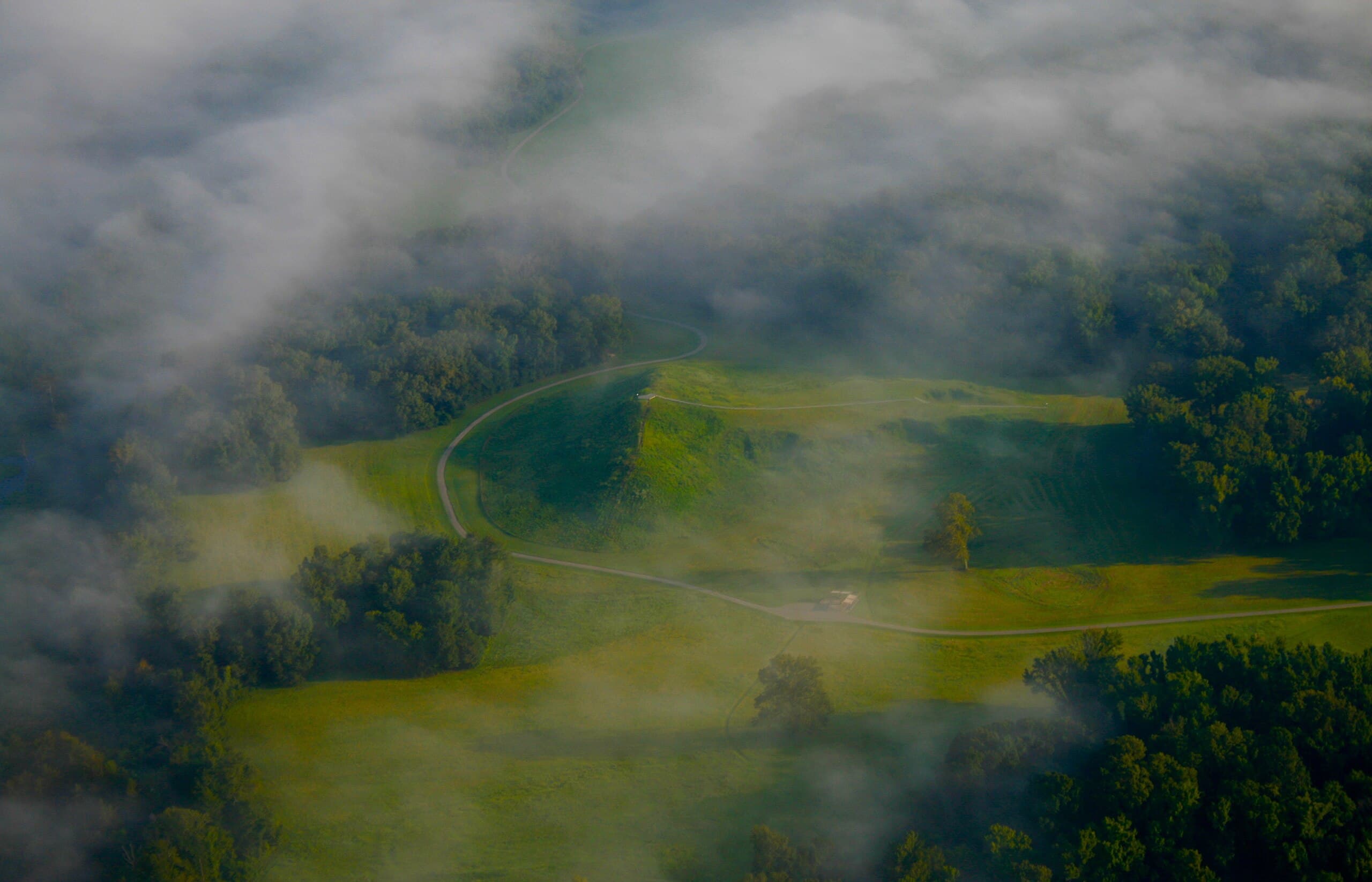
A major new study challenges long-standing ideas about who built Poverty Point — one of North America’s oldest monumental sites — 3,500 years ago, arguing the vast earthworks in northeast Louisiana were the product of large, periodic gatherings of ordinary hunter-gatherer groups rather than the work of a hierarchical chiefdom.
Researchers at Washington University in St. Louis say the scale of the site, concentric ridges, and towering mounds made without horses, wheels, or farming infrastructure do not require a central ruling class to explain their construction.
The team’s findings, published in the journal Southeastern Archaeology and led by anthropologist T.R. Kidder with graduate researcher Olivia Baumgartel and archaeologist Seth Grooms, posit that Poverty Point functioned as an episodic ceremonial center where thousands converged to trade, build, and perform shared rituals.
Poverty Point earthworks show no signs of permanent occupation
“The emerging picture is one of a community defined not by social ranks but by collective purpose,” Baumgartel said. “We believe these were egalitarian hunter-gatherers. There is no archaeological indication of chiefs directing their labor.”
Poverty Point has long puzzled archaeologists. Located along the Mississippi River, the site required the movement and shaping of soil equivalent to an estimated 140,000 dump-truck loads. For decades, the scale of labor has been compared with later, clearly hierarchical sites such as Cahokia, leading many scholars to assume the presence of centralized leadership at Poverty Point.
But Kidder’s team says multiple lines of evidence point the other way. Despite extensive excavation, archaeologists have found virtually no signs of permanent occupation at Poverty Point, no cemeteries, no large houses, no sustained domestic debris, suggesting the earthworks were not the heart of a settled political capital but the focus of intermittent, large-scale gatherings.
The new interpretation also gives ritual and environmental motives pride of place. Kidder and colleagues suggest the monuments may have been expressions of communal effort aimed at restoring balance in the face of unpredictable floods and other climate stresses in the late Holocene Southeast. In that view, the earthworks and the deposition of valued objects were spiritual acts meant to protect communities and secure cosmological harmony.

The study’s co-author, Grooms, who is a member of the Lumbee tribe, and the research team emphasized conversations with Native American communities as informing their approach and underscoring Indigenous worldviews that prioritize communal obligation and balance rather than economic accumulation.
Radiocarbon dating of objects retrieved at the site dates back about 500 years
The Washington University researchers also re-examined material from nearby and related sites. Radiocarbon dating of archived artifacts from Claiborne and Cedarland in western Mississippi suggests Cedarland predates Poverty Point by about 500 years, helping disentangle the region’s chronology and clarifying how materials and ideas moved across the landscape over time.
Field methods combined re-excavation of test pits first dug in the 1970s with updated dating techniques and advanced microscopy to detect subtle traces that earlier work may have missed. Those careful, modern analyses underpin the team’s reinterpretation.
Kidder said the work reframes Poverty Point’s legacy. Rather than a monument to centralized power, the site may be a testament to what can be achieved through episodic, cooperative labor motivated by shared ritual and social obligation, a reminder, he and his colleagues write, that some of the world’s greatest constructions arise not from authority but from collective belief and effort.
See all the latest news from Greece and the world at Greekreporter.com. Contact our newsroom to report an update or send your story, photos and videos. Follow GR on Google News and subscribe here to our daily email!




